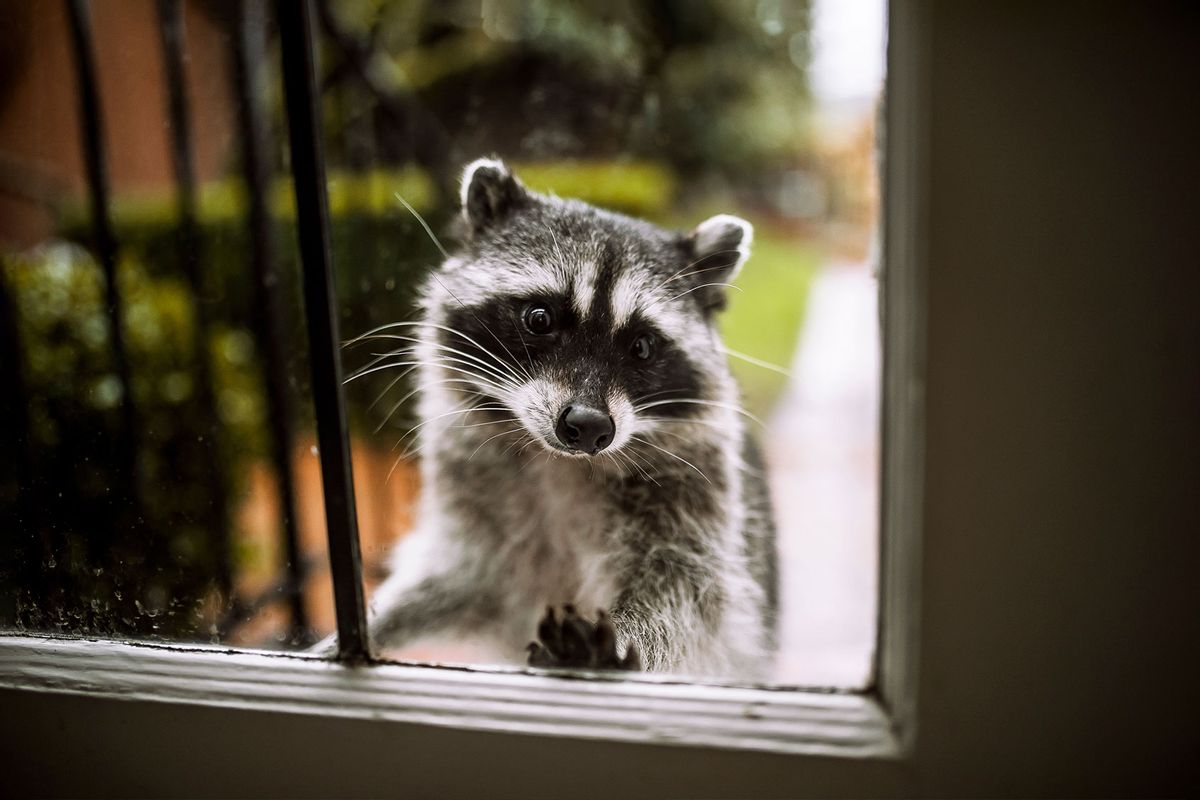It's like taking candy from a baby. Or leftover Chinese food from a garbage can; whatever metaphor works for you. Just play it cool. Don't pick any fights and don't make a lot of noise. If you really want to make it as a bandit in the big city, you've got to become the kind of raccoon nobody suspects.
That's according to a new study released earlier this month in the Journal of Experimental Biology, in which researchers from the University of Wyoming Raccoon Project (UWRP) reported their findings on the adaptive abilities of urban raccoons they'd tracked in the city of Laramie over a four year period. What they concluded may not come as much of a surprise to anyone who's ever seen "Goodfellas": loudmouths who like to make a scene are a hindrance to the whole family. It's the less combative types who are better suited to running the cocaine operation — or maybe just raiding a dumpster.
Want more health and science stories in your inbox? Subscribe to Salon's weekly newsletter The Vulgar Scientist.
After humanely tagging 204 raccoons over the years, the Wyoming researchers built up a small pool of animals on which they were able to conduct both task-based and observational experiments. (You can get to know some of them on The Wyoming Raccoon Project, and they all look like a good time.) In studying the animals' impulsivity and adaptability, researchers observed that "the least bold and most docile raccoons seemed best prepared to learn" how to obtain rewards.
This kind of research is promising for helping the humans who share an environment with our clawed, nocturnal neighbors manage them more wisely. Raccoons are often categorized as "nuisance" animals, and showier raccoons are generally presumed to be the biggest nuisances. They're just misunderstood! Because "although bolder, proactive individuals may indeed be prone to more obvious forms of conflict (e.g. approaching humans)," the study authors explain, "it is possible that shyer, reactive individuals are prone to less obvious forms of conflict that require greater associative learning or flexibility in behavior."
Our fascination with trash pandas and their idiosyncratic personalities goes way back. In 1907, Clark University researcher H. B. Davis published "The Raccoon: A Study in Animal Intelligence," a survey of roughly a dozen raccoons in captivity. In it, he noted that "The raccoon has a high reputation for cunning and adroitness," marveling at the "subtlety" of the animal, its "lively curiosity " and "intelligence above the average in animals." And presciently, he compared the "most purely nervous… much more active" types against their "more accurate and phlegmatic fellows," is if the one trait naturally follows the other.
Yet research on raccoon behavior remained relatively scant for decades. That's likely because back then, they kept out of our way and we stayed out of theirs. Raccoons didn't even appear in cities until two decades after Davis published his study, when they were first sighted in Cincinnati.
"Every city block probably has a raccoon living on it."
In recent years however, as raccoons have increasingly moved, like roving packs of A24 t-shirt wearing kombucha brewers, into urban neighborhoods, the need to understand them has increased. "Every city block probably has a raccoon living on it," urban biologist John Hadidian told National Geographic back in 2016. "These animals have adapted to urban living. They've figured out how to cope with these environments just as well — or better — than they used to do in the wilderness."
That's a problem, because in addition to being rough on your roofing tiles, raccoons can be bad for your health and that of your pets. They can carry rabies, roundworm and other diseases. They can injure with a bite or scratch if they feel provoked.
Unsurprisingly, climate change has been helping them nudge closer and closer to your own garbage cans — a 2019 report on current and projected climatic regions favorable to the animals noted "the ecological plasticity of the raccoon" and warned of the environmental impact of their expanding infiltration.
And raccoons are just the tip of the trash pile. A 2020 Pew Research report called "Deer, bear and Everywhere: Animals move into the city" cited the rise of "coyote sightings, along with reports of bobcats, mountain lions and bear" in the Seattle area, and observed that "Scientists nationwide generally agree that more animals are moving into urban and suburban areas." In August, a local mountain lion was spotted casually roaming the streets of Los Angeles. I have of late found myself daily encountering raccoons, opossums and skunks on my early morning jaunts around my Manhattan neighborhood. (The rats were nothing new.) It's estimated that sixty percent of human diseases originate in animals. More of them living among us means a lot more to think about than just property damage.
The better we get to know the animals that are coming into our neighborhoods, the better we can handle the new challenges they bring. Speaking to the New York Times this week, University of British Columbia behavioral ecologist and study co-author Sarah Benson-Amram noted that efforts to control raccoon populations usually focus on those more high profile, aggressive creatures — leaving their less confrontational brethren to skulk under the radar. And "maybe they're the ones who are learning how to open up the chicken coops and steal your chickens or break into your attic," she said.
As the raccoons and other species are cleverly adapting to life among us, so then must we with them. "These species are present among us," Seattle University professor Mark Jordan told Pew's Stateline in 2020. "Treating every non-human living organism in the city like a nuisance — you're fighting an uphill battle… You'll never win." Instead, he said, "You need to find better ways to coexist with them." Just keep an eye on the quiet ones.
Read more
about our fascination with animal behavior



Shares